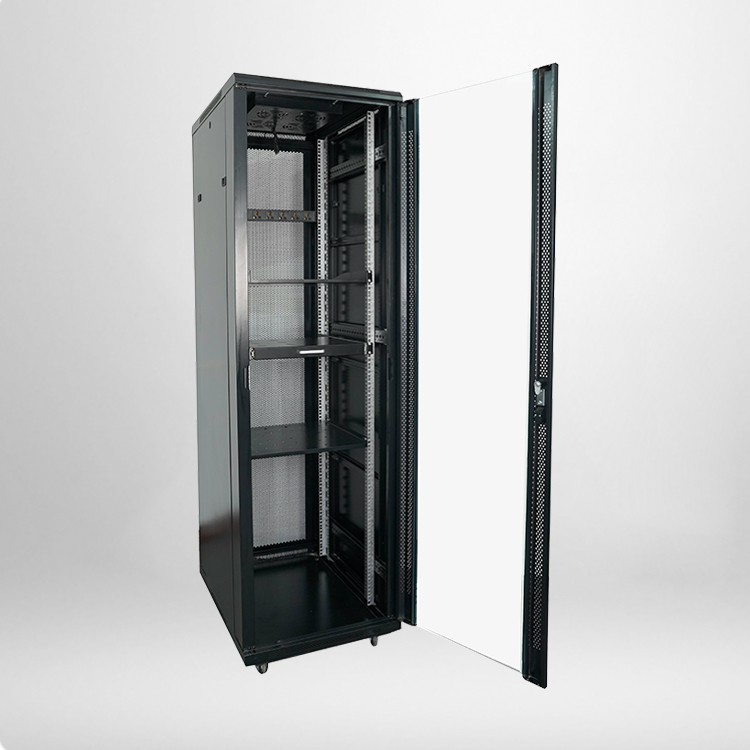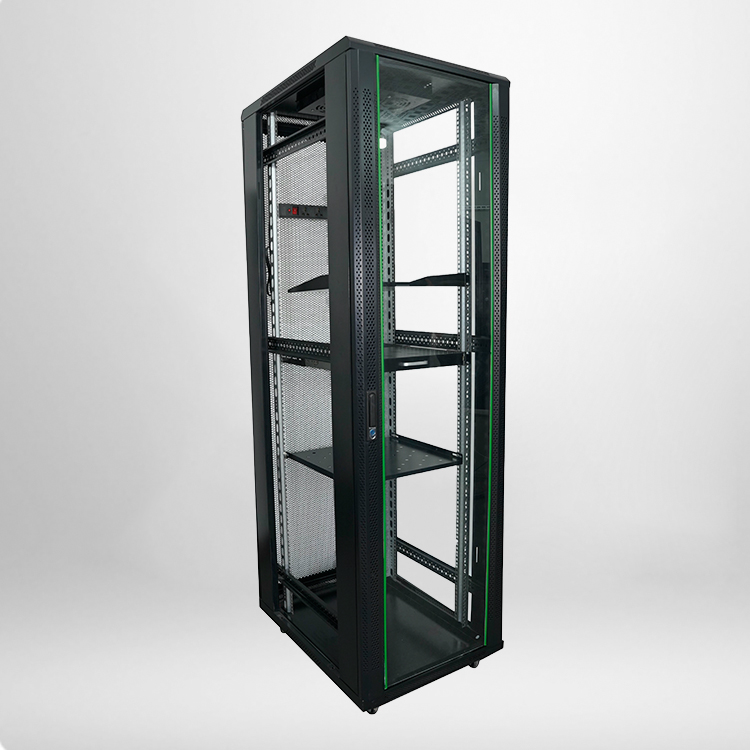
36U floor standing equipment racks are foundational components in data centers, server rooms, and industrial control spaces, designed to organize and protect critical hardware like servers, switches, and storage devices. The “36U” designation refers to their height—each “U” (unit) equals 1.75 inches, making these racks approximately 63 inches tall, a size that balances space efficiency with accessibility for most mid-to-large-scale setups. Unlike smaller 12U or 24U racks, 36U models cater to growing infrastructure needs, but their utility depends on thoughtful deployment, cooling management, and adherence to safety standards.
Structural Features for Hardware Protection
A well-designed 36U floor standing rack includes structural elements that safeguard equipment and simplify maintenance. Most models feature adjustable mounting rails with square or round holes, allowing flexibility to fit devices of varying sizes—from 1U network switches to 4U servers. Heavy-duty racks (often rated for 1,000+ pounds of static load) use reinforced steel frames with cross-bracing on the sides and back, preventing wobbling even when fully loaded. Many also include locking front and rear doors (mesh or solid) to restrict access and reduce dust accumulation; mesh doors offer the added benefit of improving airflow, a key factor for heat-sensitive hardware. Additionally, built-in cable management channels (vertical and horizontal) help organize power and data cables, minimizing tangles and making it easier to trace connections during troubleshooting.
Scene-Specific Deployment Strategies
The way a 36U rack is deployed varies based on the environment and equipment needs. In data centers, racks are typically arranged in “hot-aisle/cold-aisle” configurations: 36U racks are placed back-to-back (creating hot aisles where hot air exhausts) and front-to-front (cold aisles where cool air is supplied). This setup maximizes cooling efficiency, as cool air is directed only to equipment intakes. For small to medium business (SMB) server rooms, space may be limited, so 36U racks are often placed against walls, with rear access maintained via a minimum 30-inch clearance for maintenance. In industrial settings, racks may need additional protection—some models come with waterproof tops or corrosion-resistant coatings to withstand humidity or chemical exposure, ensuring durability in factories or outdoor utility rooms.

Cooling Optimization for Heat Management
Overheating is a top risk for rack-mounted equipment, and 36U racks (with more devices than smaller models) require intentional cooling solutions. Passive cooling works for low-density setups: mesh doors, combined with strategic rack placement near air vents, allow natural airflow to dissipate heat. For high-density loads (e.g., multiple servers running 24/7), active cooling is necessary. This includes installing 1U or 2U rack-mounted fans at the top of the rack (to pull hot air out) or bottom (to push cool air in), or integrating rack-level air conditioners for extreme heat environments. Cable management also plays a role in cooling—neatly organized cables prevent airflow blockages, ensuring cool air reaches all devices evenly. Monitoring tools, such as temperature sensors placed inside the rack, help track heat levels and alert users to potential issues before equipment fails.
Weight Capacity and Safety Compliance
Safety is non-negotiable when using 36U racks, as their height and load capacity increase the risk of tipping or structural damage. First, it’s critical to adhere to static and dynamic load ratings: static load (weight when the rack is stationary) typically ranges from 800 to 1,500 pounds, while dynamic load (weight during movement) is lower—never exceed these limits, as overloading can bend the frame or damage floor surfaces. When loading the rack, follow the “bottom-heavy” rule: place heavier equipment (e.g., 4U storage arrays) at the bottom to lower the center of gravity and reduce tipping risk. Secure the rack to the floor using anchor bolts (most racks have pre-drilled holes for this purpose), especially in earthquake-prone areas. Additionally, ensure compliance with industry standards like ANSI/EIA-310-D, which specifies rack dimensions and safety requirements, to guarantee compatibility with equipment and minimize hazards.


